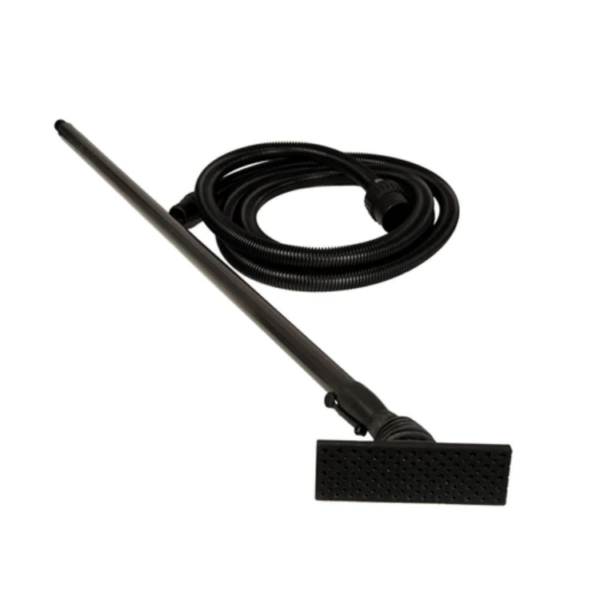The most important task in any home renovation involves drywall. Once you are done hanging drywall sheets, start filling in any gaps or nail gouges with joint compound and tape. After the joint compound (or mud) dries, you will need to start the sanding process using drywall sanders. Sanding the drywall creates a smooth surface that can be used to apply primer and paint. This guide will explain the steps and what tools you can use, as well as the differences between dry and wet sanding.
Sanding Drywall using a Sponge
The drywall sanding spongs have been specially designed to smoothen the joint compound. They can be used wet or dry and are ideal for reaching tight corners and ceilings.
A wet sanding technique is the best for sponges. This will soften the compound or mud and dampen the dust from sanding to keep it in control.
- Submerge the sponge completely in water, and then squeeze out any excess.
- Use a circular motion to rub the rough side of the drywall against it. Make sure you get into all edges.
- Continue to rub until the surface becomes smooth. Rinse the sponge if the sponge starts to dry. This can take some time depending on how large the patch is.
- After the area has been smoothed, allow it to dry overnight before you paint or add finishing touches.
Sanding Drywall with Sandpaper
Drywall sandpaper is necessary to create a smooth, even surface in sections of drywall that have been dried with mud.
For large-scale drywall work, sanding tools can be useful. For lower and middle drywall, a hand sander is required. For higher ceilings and wall areas, use a pole sander that has an extension handle.
Both pole and hand sanders have sandpaper-covered sanding screens. Use a push-pull motion with a pole sander or hand sander to apply pressure along seams, nail and screw patterns and even pressure. To smooth out rough areas, use semi-coarse paper of 100 or 120 grit. Next, add 150 grit.
For finishing drywall sanding, use sheets of sandpaper. This is useful for areas such as around electrical outlets or feathering compound into the wall. Use 220-grit sandpaper to sand these areas. Use coarse sandpaper less than 100 grit to avoid damaging the drywall.
Use coupon code FINISH10 to save 10% off your order. Limit is 1 per customer.
-
Mirka DECO 2.75″x 8″ 113H Grip Sander Tool with Telescoping Pole Kit (MIR-9300)
Rated 0 out of 5Drywall Sanders USD $327.08
Sanding Drywall using an Electric Sander
For large drywall projects, an orbital sander may be an option. Although this tool is lightweight, it can be used quickly and efficiently. However, as a powerful tool, you must use it carefully to ensure that the surface of the drywall is not damaged.
Fine grit sandpaper between 150-180 grit is required to achieve the desired results. To collect dust and debris, some drywall-sanders have a vacuum attachment. For instructions on assembly, refer to the instructions provided with your unit.
- After all pieces have been connected, turn on your sander and place the sanding screen gently against the surface.
- Use a little pressure to push the screen into any uneven areas, but not enough to flatten the pad against the surface.
- To smoothen the drywall compound, move it in an overlapping manner.
- The sander should be in constant motion as the sanding screen comes in contact with the wall. Avoid using excessive pressure and a steady, sweeping motion.
- Use the sander only when the screens are not in direct contact with sharp protrusions such as nails or screws. They can cause severe damage to the pad.
- You can create uneven areas and swirl marks by abruptly stopping the sander from hitting the surface.
Wet Sanding vs. Dry Sanding
Because it is easier to get a sponge into tight corners and small areas, wet sanding using a sponge works well.
It also produces less dust, which makes it easier to clean up afterward. This method can result in a less smooth finish than dry sanding.
Dry sanding gives you a smoother, more even finish. This is a great way to cover large areas or entire walls in larger rooms.
This can cause dust to build up on your newly repaired drywall, as well as on flooring and furniture nearby. Before moving onto the next stage of your renovation, always wipe the dust off.
Drywall Sanding Tips
Dust from drywall sanding can release very fine particles into the air. The dust can cause irritation to the eyes and lungs. Dust can rest on clothing, furniture, and other items that are not protected from the dust. These tips will help you avoid making mistakes when drywall sanding large or small.
- Protect your face with a dust mask. Protect your eyes with safety glasses. Protect your hair with a head cover.
- To catch drywall dust falling from the ceiling, place a drop cloth on top of furniture.
- To seal the room and keep drywall dust from getting into the rest of the house, apply plastic sheeting to the doorway.
Use coupon code FINISH10 to save 10% off your order. Limit is 1 per customer.
-
Sale!
 Out of stock
Out of stock
DEWALT 20V MAX Drywall Sander (5.0AH) w/ 2 Baterries & Charger
Rated 0 out of 5DewaltUSD $628.26Original price was: USD $628.26.USD $502.46Current price is: USD $502.46.











